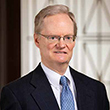Theodore Roosevelt, the Election of 1912, and the Founding of the Federal Reserve
Abstract
The Federal Reserve Act was the outcome of compromises among competing economic and political interests. Numerous studies examine how the act came together but largely take the makeup of Congress and the administration as given rather than considering the unique circumstances that led to that political distribution. This article examines how the election of 1912 changed the makeup of Congress, which increased the likelihood of central banking legislation and shaped the act. The decision of Theodore Roosevelt and other progressives to run as third-party candidates split the Republican Party and enabled Democrats to capture the White House and Congress. We show that the election produced a less-polarized Congress and that newly elected members were more likely to vote for the act. Absent their interparty split, Republicans would likely have held the White House and Congress, and any legislation to establish a central bank almost certainly would have been quite different.
Introduction
The election of 1912 was among the most consequential, and interesting, in U.S. history. Former president Theodore Roosevelt failed to secure the Republican nomination for president; he ran under the Progressive Party banner and led a revolt that split the Republican Party and opened the door for Democrats to capture the White House and both houses of Congress. Woodrow Wilson won the presidential election of 1912 with less than 50 percent of the popular vote, and Democrats (and others) won numerous seats in Congress previously held by Republicans. With the Democratic Party sweep, the 63rd United States Congress enacted such landmark bills as the Federal Trade Commission Act, the Clayton Antitrust Act, the Revenue Act of 1913 (which sharply lowered tariff rates and instituted a federal income tax), and the Federal Reserve Act. These acts revolutionized U.S. industry and commerce and likely would have been substantially different or not enacted at all without Democratic Party control of the White House and Congress or the substantial influence of newly elected progressive members.
The Federal Reserve Act established the Federal Reserve System—the nation’s central bank—with the goals of preventing banking panics and providing a more-efficient payments system. Banking instability had been a recurrent problem in the United States throughout the nineteenth and early twentieth centuries. Dissatisfaction with the banking system brought numerous proposals for reform over the years, but none gained traction in Congress until the infamous Panic of 1907. Congress subsequently enacted the Aldrich-Vreeland Act of 1908, which sought to alleviate panics by enabling associations of national banks to issue emergency currency in crises. The act, which passed with only Republican votes, was intended to be temporary while a National Monetary Commission studied the defects of the U.S. banking system and put forward recommendations for permanent reforms. The Commission’s chair, Republican Senator Nelson Aldrich, ultimately proposed legislation in 1911 to establish a central bank; but, despite an organized campaign of support, his bill was not voted out of committee and did not receive a floor vote.
The election of 1912 ended any chance that the Aldrich bill or any other Republican plan would be enacted by the 63rd Congress, whose term began on March 4, 1913. Democrats took up the reform mantel, however, and passed the Federal Reserve Act, which was signed into law by President Wilson on December 23, 1913. The act included features of the Aldrich plan, notably a mechanism for commercial banks to obtain currency or reserves by borrowing from a government-sponsored lending facility. However, unlike the Aldrich plan, which envisioned a central bank largely controlled by commercial bankers, the Federal Reserve Act set up a system of regional bankers’ banks with a public board appointed by the president to oversee the system. The Federal Reserve System (henceforth “System”) thus reflected compromises among competing private and public interests and accountability, and it balanced public oversight and political independence.
Citation
Matthew Jaremski and David C. Wheelock,
ldquoTheodore Roosevelt, the Election of 1912, and the Founding of the Federal Reserve,rdquo
Federal Reserve Bank of St. Louis
Review,
Second Quarter 2025, Vol. 107, No. 7, pp. 1-15.
https://doi.org/10.20955/r.2025.07
Editors in Chief
Michael Owyang and Juan Sanchez
This journal of scholarly research delves into monetary policy, macroeconomics, and more. Views expressed are not necessarily those of the St. Louis Fed or Federal Reserve System. View the full archive (pre-2018).
Email Us


